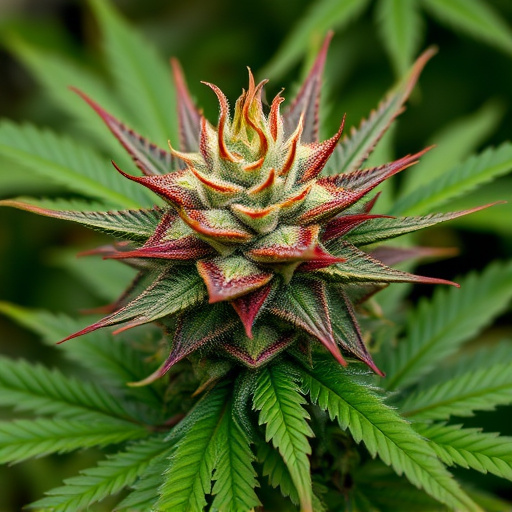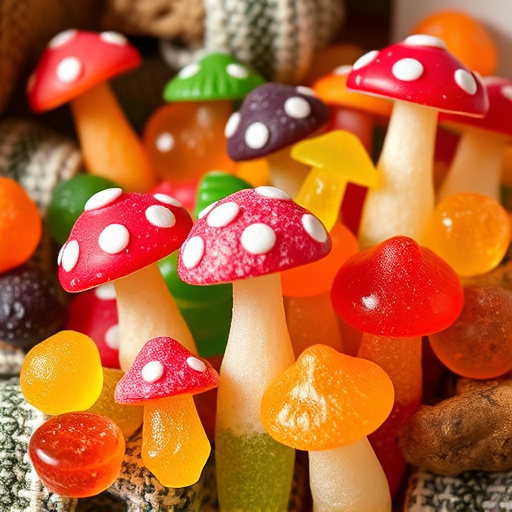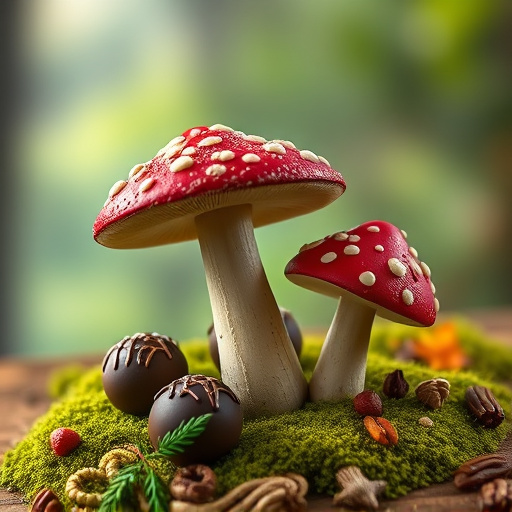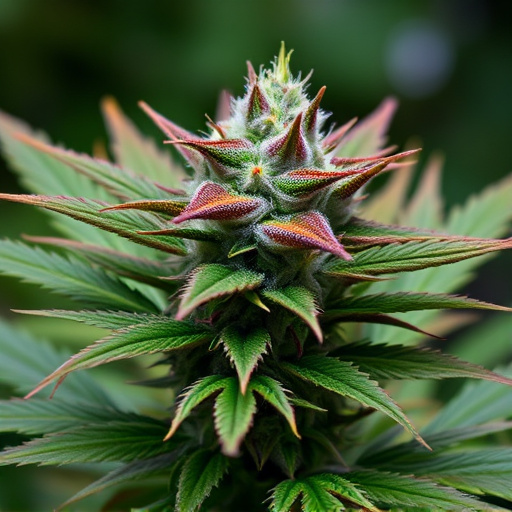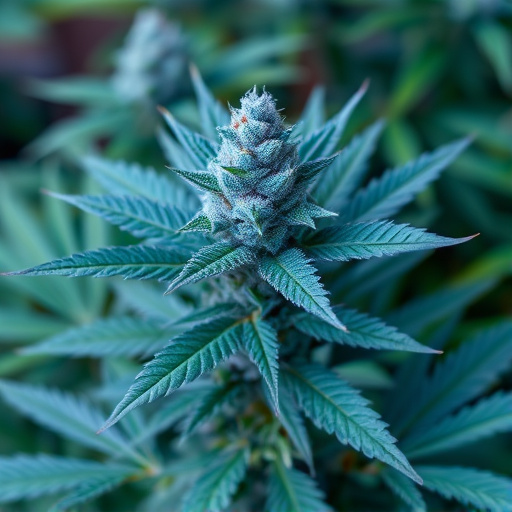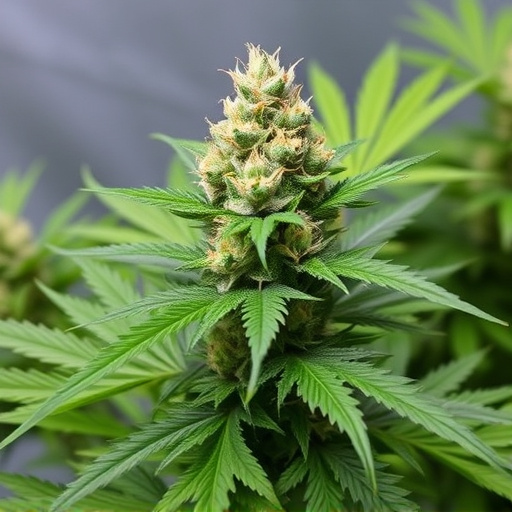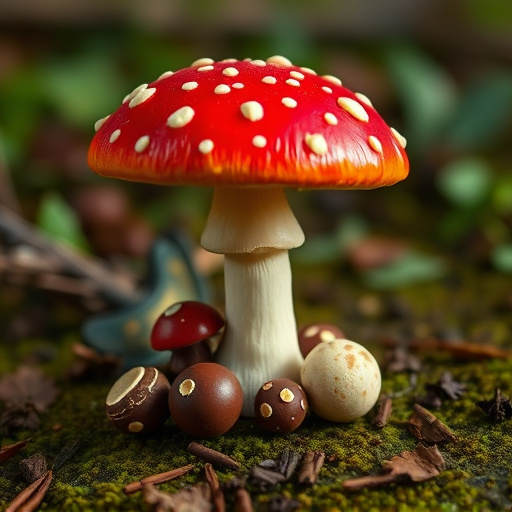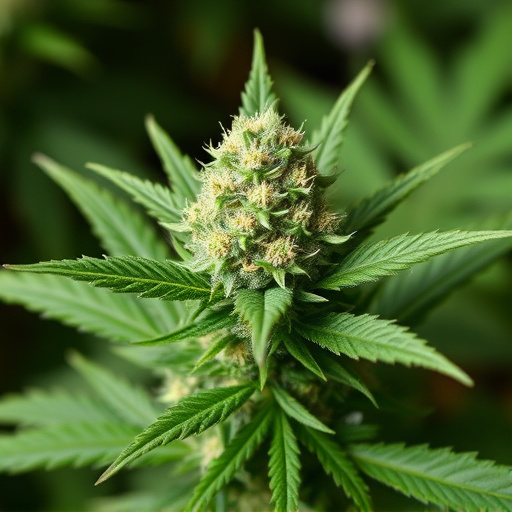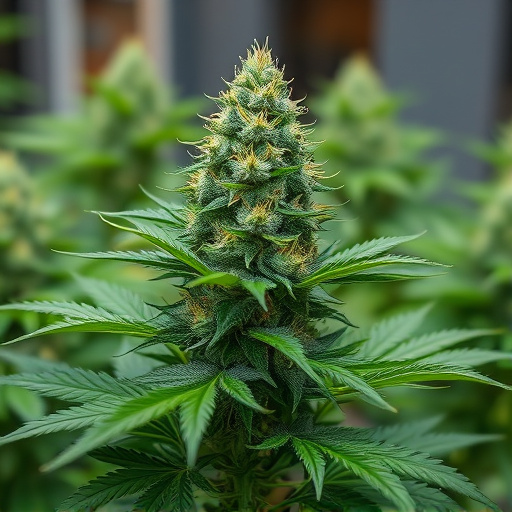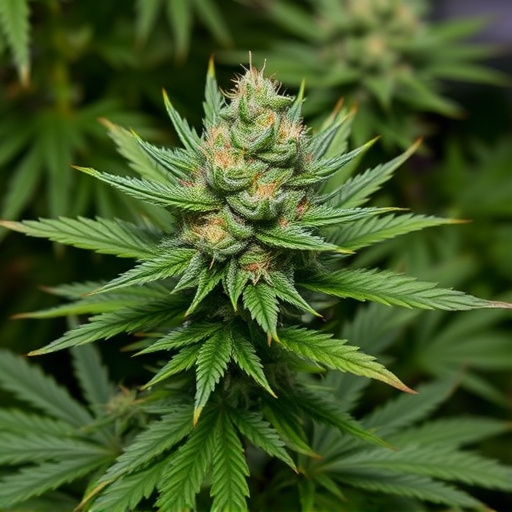Cultivating strong cannabis strains with potent aromas requires ideal growing conditions, including cool to mild temperatures (18-24°C), moderate to high humidity (40%-70%), and 18-24 hours of light per day. Proper nutrition with well-balanced, pH-neutral fertilizers is crucial, ensuring a rich blend of macronutrients and micronutrients for robust flower development. Optimal lighting involves LED or HPS lights, using blue wavelengths for leaf development and red wavelengths to induce flowering and enhance cannabinoid production. These factors collectively enhance strain quality and aroma, providing an impressive consumer experience.
Keep your cannabis flowers potent and aromatic with optimal growing practices. From lighting and temperature control to nutrient management, every step influences terpene expression. Learn how to balance NPK ratios and adjust micronutrients for maximum diversity. Discover the ideal harvesting and curing techniques to preserve potency and aroma. By following these tips, you’ll cultivate strong cannabis strains that deliver an unforgettable experience.
- Optimal Growing Conditions for Potent Aromas
- – The role of light, temperature, and humidity in cannabis potency and aroma development.
- – Best practices for lighting setup (e.g., LED vs. HPS) and ideal light spectra for different growth stages.
Optimal Growing Conditions for Potent Aromas

To cultivate strong cannabis strains with potent aromas, creating optimal growing conditions is paramount. Environmental factors such as temperature, humidity, and light play a crucial role in shaping the plant’s flavor profile. Cannabis flowers thrive in environments that mimic their natural outdoor habitats—cool to mild temperatures (around 65–75°F or 18–24°C), moderate to high humidity (between 40% and 70%), and 18–24 hours of light per day. These conditions allow the plant to allocate more resources into developing robust, aromatic flowers rather than struggling to survive.
Additionally, ensuring proper nutrition is essential. Using well-balanced, pH-neutral fertilizers and regularly testing soil nutrient levels helps maintain optimal growing conditions. Cannabis plants require a mix of macronutrients (nitrogen, phosphorus, potassium) and micronutrients for ideal growth and aroma development. A careful balance of these elements fosters the production of strong cannabis strains that not only look impressive but also offer a rich, memorable experience for consumers.
– The role of light, temperature, and humidity in cannabis potency and aroma development.
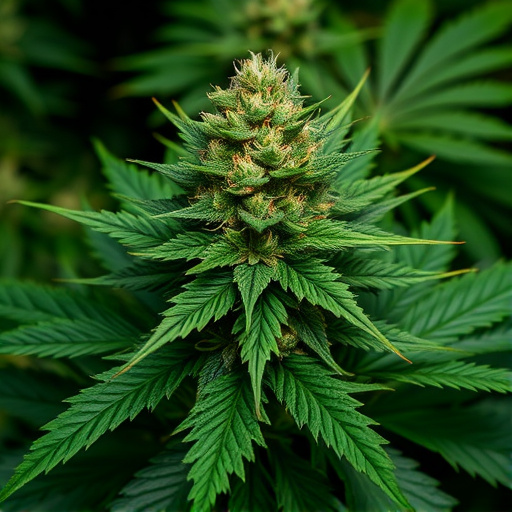
Light, temperature, and humidity play pivotal roles in cultivating a potent and aromatic cannabis plant. These environmental factors significantly influence the development of the plant’s cannabinoids and terpenes—the key compounds responsible for its unique potency and distinct aroma.
Optimal light conditions, typically ranging between 60-85% relative humidity, and temperatures maintained between 70-85°F (21-29°C), foster a thriving cannabis ecosystem. Insufficient or excessive light can stress the plant, impacting cannabinoid production. Similarly, drastic temperature fluctuations disrupt enzyme activity, affecting terpene synthesis. Maintaining consistent humidity levels ensures the plant’s respiratory system functions optimally, facilitating efficient nutrient absorption and overall growth. Together, these conditions contribute to the cultivation of strong cannabis strains with robust aromas and high potency.
– Best practices for lighting setup (e.g., LED vs. HPS) and ideal light spectra for different growth stages.
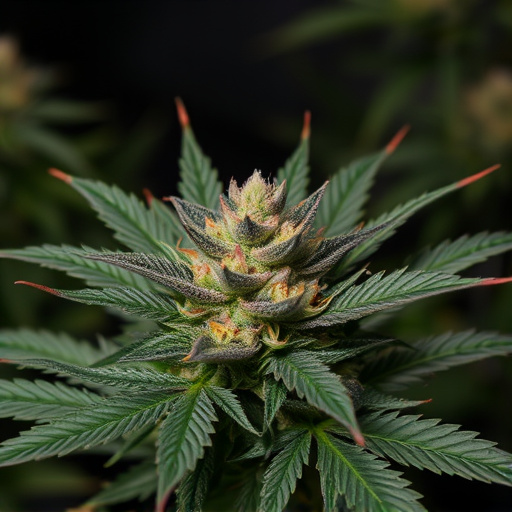
The right lighting setup is crucial for cultivating potent and aromatic cannabis flowers, as it directly influences plant growth and cannabinoid production. When it comes to choosing between LED and High-Pressure Sodium (HPS) lights, LED options have gained popularity due to their energy efficiency, longer lifespan, and ability to mimic the natural light spectrum more closely. LEDs emit less heat, reducing the risk of scorching leaves and allowing for precise control over light intensity and duration, which is essential during different growth stages.
For cannabis plants, the ideal light spectra vary depending on whether you’re focusing on vegetative growth or flowering. During the vegetative phase, a balanced light spectrum with higher blue wavelengths (400-500 nm) promotes robust leaf development and overall plant health. As plants enter the flowering stage, shifting to a spectrum rich in red wavelengths (630-700 nm) triggers floral development and enhances cannabinoid production, resulting in stronger cannabis strains and more aromatic flowers.
Maintaining optimal growing conditions is key to producing a potent and aromatic strong cannabis strain. By carefully controlling light, temperature, and humidity levels throughout each growth stage, cultivators can ensure that their plants develop rich, desirable flavors and terpin profiles. Whether using LED or HPS lighting, understanding the ideal light spectra for vegetative and flowering phases allows for precise environmental manipulation. These practices collectively contribute to crafting exceptional cannabis flowers that delight users with both potency and aroma.
